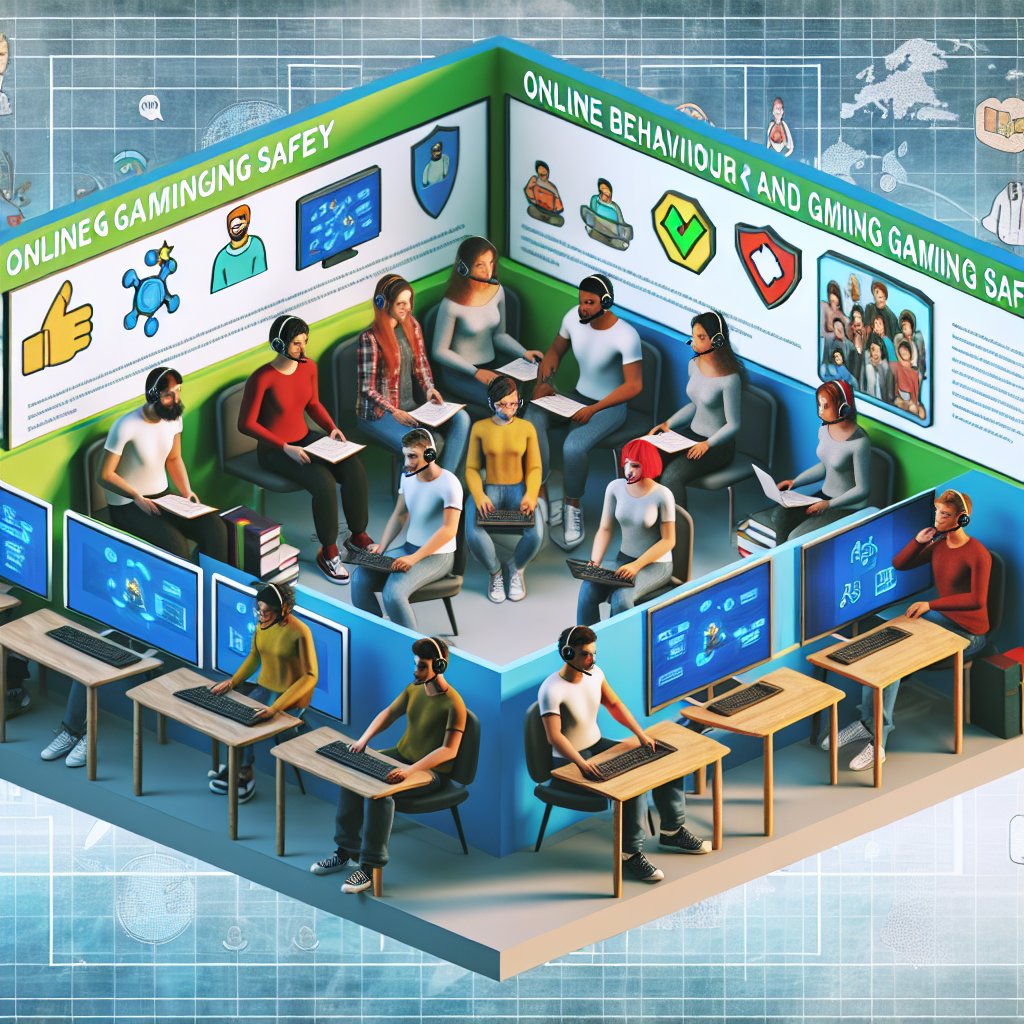Evaluating Remote Behavioral Skills Training for Online Gaming Safety
Introduction
With the rise of online gaming, children are interacting with strangers more often than ever before. While online games can be fun and engaging, they also pose risks like solicitation, grooming, and exposure to inappropriate content. Parents and caregivers worry about how to keep their children safe, but traditional safety training methods may not always be effective in an online setting.
A recent study by Henry A. Chovet Santa Cruz, Raymond G. Miltenberger, and Rasha R. Baruni, published in Behavior Analysis in Practice (2024), examines how remote behavioral skills training (BST) can improve children’s safety behaviors while gaming online. This research is critical for behavior analysts, parents, and educators who want effective ways to teach kids how to handle unsafe online situations.
Why Does Online Safety Matter?
- Increased Internet Access: More youth engage in online gaming, often unsupervised.
- Exposure to Strangers: Studies show that many children interact with people they do not know in real life.
- Potential Dangers: Online predators use tactics like gift-giving, deception, and manipulation to build trust and exploit children.
Given these risks, it’s essential to teach kids how to recognize and respond to unsafe situations in digital environments.
What Is Behavioral Skills Training (BST)?
Behavioral Skills Training (BST) is a proven teaching method commonly used in behavior analysis. It consists of four key components:
- Instructions – Explain the correct behavior.
- Modeling – Demonstrate how to perform the behavior.
- Rehearsal – Allow the learner to practice.
- Feedback – Provide corrective or reinforcing feedback.
BST has been effective for teaching various safety skills, including abduction prevention and inappropriate touch response training. However, little research exists on using BST for teaching online safety in gaming environments—until now.
The Study: Teaching Online Gaming Safety
Santa Cruz, Miltenberger, and Baruni conducted a study to test a remote BST program aimed at improving youth safety in online games.
Participants and Setup
- Two children, ages 7 and 9, and their caregivers participated.
- The study was conducted remotely via video conferencing.
- The online game used was Among Us, a multiplayer social deduction game.
Assessment of Online Safety Responses
The researchers tested how well children responded to 10 different lures commonly used by online predators:
- Asking for personal details (e.g., “Where do you live?”)
- Asking for age-related information (e.g., “How old are you?”)
- Trying to switch to private messages (e.g., “Add me on another platform”)
- Offering virtual rewards in exchange for personal info
- Asking about parental supervision
- Sending inappropriate content
- Suggesting an in-person meeting
- Impersonating a friend or trusted individual
- Requesting account passwords or login information
- Pressuring the child to keep secrets from parents
These scenarios were tested before and after the BST training to measure improvement.
How BST Was Used to Improve Online Safety
The training followed the standard BST model.
- Instructions: The researcher explained why online safety is important and described the best ways to respond to unsafe situations.
- Modeling: The researcher demonstrated appropriate responses to different types of online lures.
- Rehearsal: The children practiced responding to scripted scenarios.
- Feedback: The researcher provided immediate reinforcement for correct responses and corrective guidance when needed.
The entire training session was conducted remotely, making it accessible, practical, and cost-effective for families who need online safety education.
Study Findings: Did It Work?
Initial Responses (Before Training)
During baseline testing, the children did not consistently respond correctly to online safety threats. Many made dangerous mistakes, such as:
- Revealing personal information when asked about their name, age, or location.
- Agreeing to move conversations to private chat platforms.
- Failing to report inappropriate behavior to a trusted adult.
These findings align with previous research showing that many children lack the skills to handle online dangers effectively.
Responses After BST Training
Following BST, the children showed significant improvements:
- They were more likely to refuse requests for personal information.
- They avoided private conversations with strangers.
- They consistently reported concerning interactions to an adult.
Notably, these skills were maintained during follow-up testing, suggesting that BST is an effective way to teach online safety skills remotely.
Implications for Behavior Analysts and Caregivers
This study highlights the potential for remote BST interventions in promoting online safety. Behavior analysts, educators, and parents can learn from its findings and apply them in real-world settings.
Key Takeaways
- Remote BST is effective: Even when done over video conferencing, BST successfully teaches online safety.
- Children need explicit training: Many kids do not instinctively recognize online threats—structured training makes a difference.
- Repetition and feedback enhance learning: Offering multiple practice opportunities and reinforcing correct responses helps children retain safety skills.
How Can Behavior Analysts Use This Information?
Behavior analysts working with children and families can integrate remote BST sessions into interventions focused on online safety. Some key recommendations include:
- Conducting online safety assessments to determine a child's skill level.
- Using BST principles when teaching online safety, including instruction, modeling, rehearsal, and feedback.
- Collaborating with parents to reinforce online safety skills at home.
Conclusion and Next Steps
Online gaming is a major part of many children's lives, and with it comes risks that parents and caregivers need to address. This study by Santa Cruz, Miltenberger, and Baruni shows that remote BST is a practical and effective way to teach kids how to respond to online threats.
For behavior analysts, this research provides evidence-based guidance on how to train children in online safety. By incorporating BST techniques, professionals can help kids build the skills they need to stay safe while gaming.
Looking ahead, future research could expand on these findings by testing:
- BST training in larger participant groups.
- How different games and platforms impact learning.
- How to further increase skill retention over time.
Further Reading
For a deeper dive into this research, read the full study here:
Santa Cruz, Miltenberger, & Baruni (2024).
By staying informed and applying evidence-based interventions, behavior analysts can play a crucial role in keeping kids safe in the ever-changing digital world.



